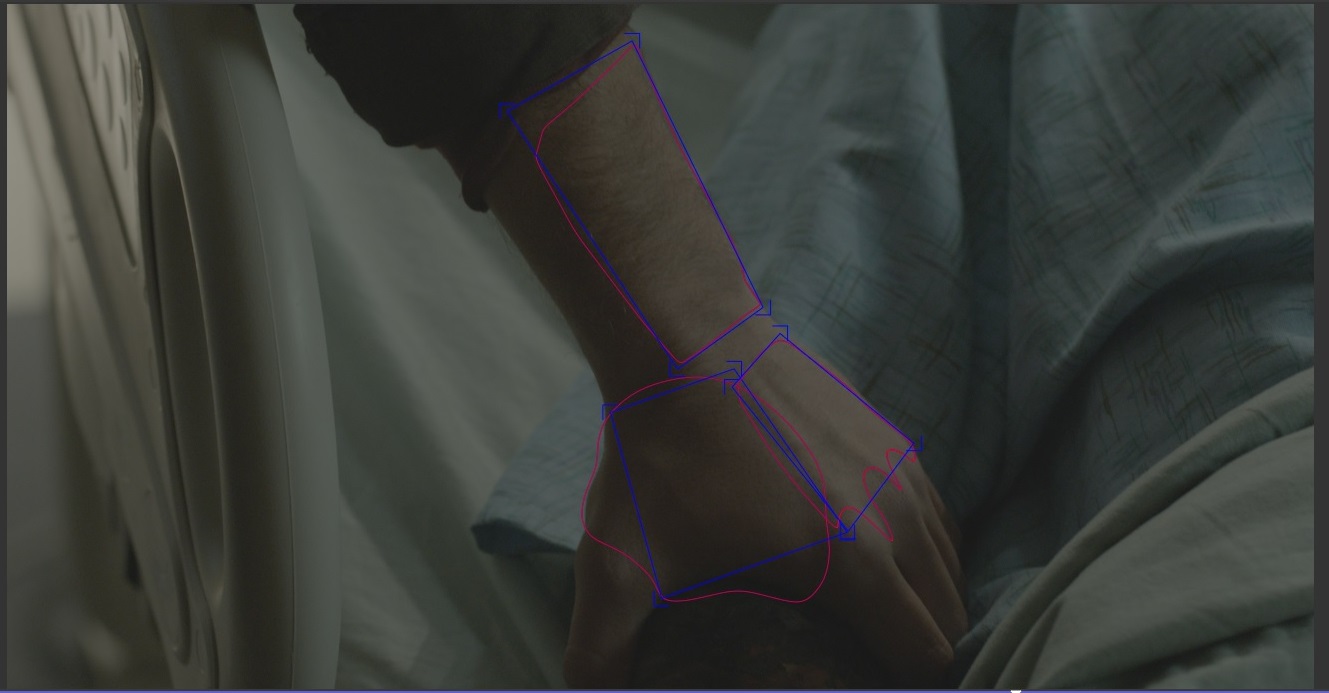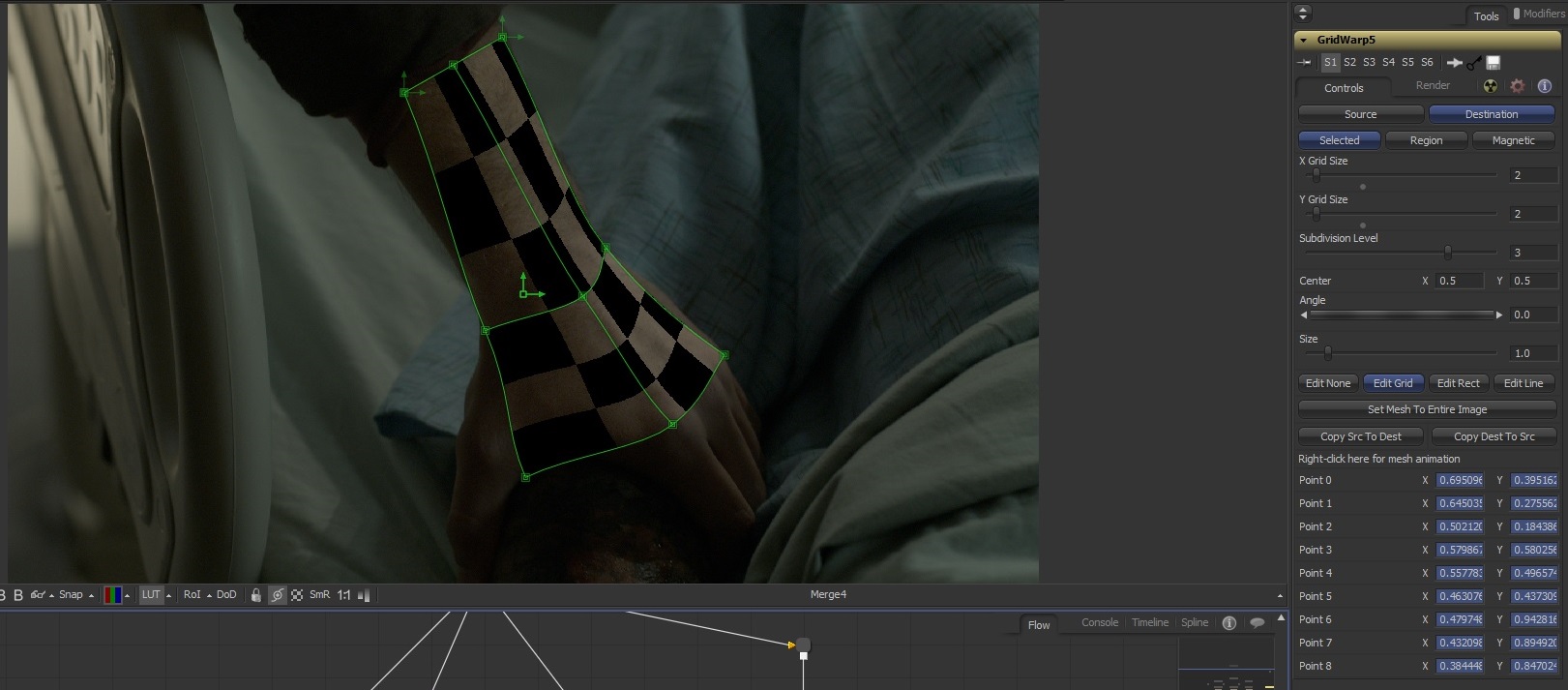An acquaintance recently quizzed me about whether planar tracking could be used for flexible, organic subjects. The short answer is "yes, I do it all the time," but I thought a little case study might help to clarify the matter.
Here is a frame from an upcoming episode of Teen Wolf, with some mocha shapes indicated:
The red splines are the shapes I drew for tracking. Each one isolates a quasi-planar surface that has its own motion. The blue lines indicate where the resulting tracking points will fall—one at each corner. The wrist is far too elastic to get a reliable track, but that doesn't matter because the grid warp that I create will be able to smooth out the transition from the hand to the forearm.
I exported all three tracking regions to Eyeon Fusion as individual trackers. Each tracker node has four tracking points inside it, ready to be used for corner-pinning. Frequently, a corner-pin is exactly what you'd want from Mocha tracking data. In this case, though, the goal was to put some CG veins on the back of the hand and running up the forearm. While it would be possible to use the trackers to individually control three different vein networks and use some manual warping to merge them together, that's a really labor-intensive approach. What I really wanted was a way to use a single vein network image that could be warped across the wrist and follow the motion naturally with little additional work.
Here's a look at how I set it up in Fusion:
Starting with a simple 2 x 2 grid warp, I published each of the points (select a point and Shift-P to publish it) one at a time, so that I would know in what order I needed to connect the trackers. Publishing the points allows you to use them in expressions or attach them to other points. In this case, each of the points in the grid warp was attached to one of the trackers from Mocha.
By the way, there was one point at the top of the forearm that did not have a suitable Mocha tracking point available. I gave that one an expression to place it halfway between the other two points at the top of the forearm. This is the midpoint formula: (x1 + x2) / 2, (y1 + y2) / 2.
The resulting grid warp enables us to draw the vein network in full resolution, and it is mapped onto the hand as though it were a texture. The above image, of course, just has a checkerboard that I used to set the system up and check the track. The next step would be to adjust the source grid in order to fix the stretching the checkerboard.
So hopefully that clarifies one way in which a planar tracker like Mocha can be used to track organic subjects and even account for flexion. I have also used it to track blinking eyes and mouth shapes. Although it's called "planar tracking," it really does work for a large number of cases with curved or organic surfaces.

